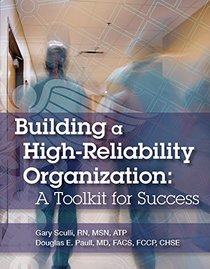Search -
Building a High-Reliability Organization: A Toolkit for Success
Building a HighReliability Organization A Toolkit for Success
Author:
Building a High-Reliability Organization: A Toolkit for Success is a practical guide to becoming a high-reliability organization (HRO). HROs practice the highest standards of patient quality and prevent never events before they occur. In this first-of-its-kind book, written for real-world healthcare professionals on the front lines of patient sa... more »
Author:
Building a High-Reliability Organization: A Toolkit for Success is a practical guide to becoming a high-reliability organization (HRO). HROs practice the highest standards of patient quality and prevent never events before they occur. In this first-of-its-kind book, written for real-world healthcare professionals on the front lines of patient sa... more »
ISBN-13: 9781556452994
ISBN-10: 1556452993
Publication Date: 8/28/2015
Pages: 150
Rating: ?
ISBN-10: 1556452993
Publication Date: 8/28/2015
Pages: 150
Rating: ?
0 stars, based on 0 rating
Publisher: HCPro a division of BLR
Book Type: Paperback
Members Wishing: 1
Reviews: Amazon | Write a Review
Book Type: Paperback
Members Wishing: 1
Reviews: Amazon | Write a Review
Genres:




